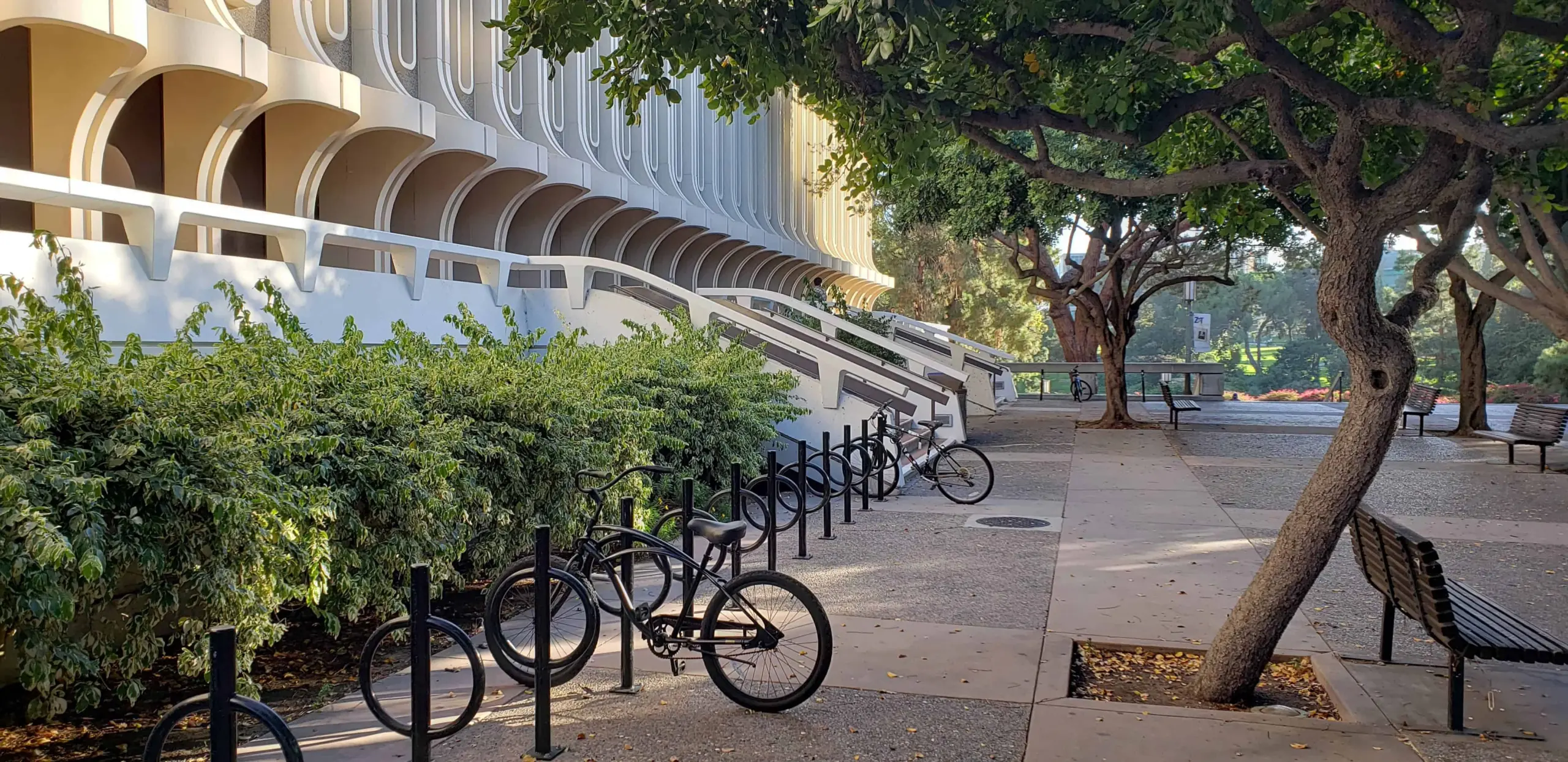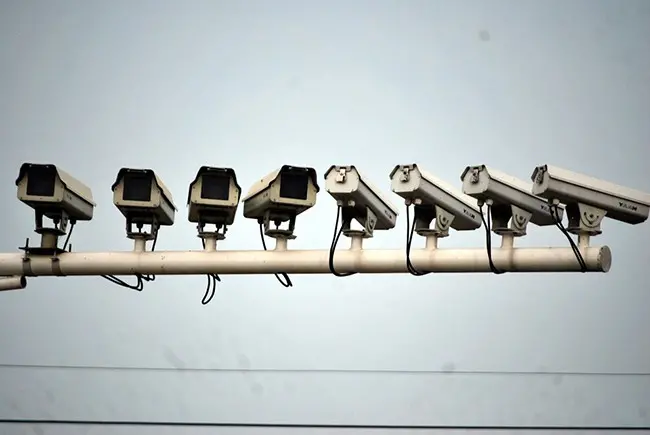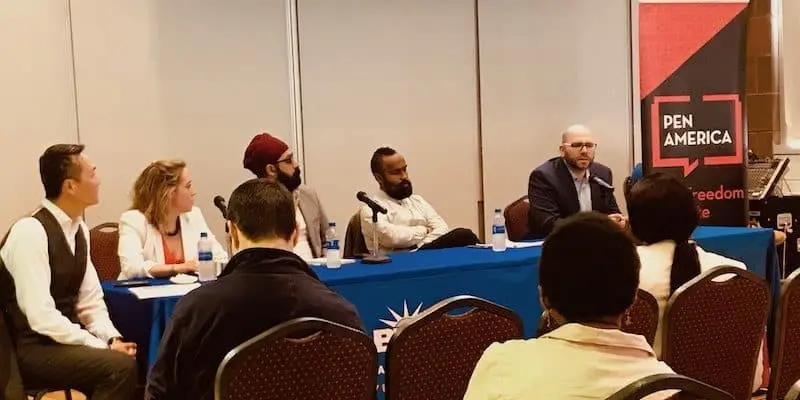This piece was originally published in the Association of College & University Housing Officers-International Talking Stick magazine.
In volatile times, what do housing officers and residential staff need to know about campus free speech?
One doesn’t have to look hard at today’s higher education landscape to see the attention garnered by questions surrounding free speech. Almost daily, headlines announce the latest outrage, as incidents involving censorship, offense, or infringements on rights ripple through national news networks. There are the efforts by right-wing groups to shame liberal professors for their tweets; stories of administrators’ responses to hate and racism that leave students of color feeling ostracized and unwelcome; accounts of cancellations and disinvitations involving high-profile speakers; and then the videos of protest – peaceful, silent, loud, confrontational, or disruptive – which demand collective attention. As reported in 2018 by Pew, a large segment of the public remains convinced that college leaders and personnel have fumbled on issues of free speech, feeding into a perception that higher education is heading in the wrong direction.
From the outside looking in, the national debate over campus free speech may seem ancillary to the work of housing officers and residential staff. But in the day-to-day of college operations, interpersonal tensions surrounding language and politics have become ever present. These issues have permeated campus life, becoming a chief concern of students, faculty, and staff alike. And they have sometimes presented unique challenges to housing officers, who, as one frontline unit facing students and parents, have faced pressures to intervene and respond in ways that are both in keeping with appropriate laws and policies and consistent with core institutional values, such as free speech, diversity, equity, and inclusion.
Indeed, many of the controversies over free speech on campus have been, at their core, not principally about speech, but about confronting legacies of racism, political disagreements, and pushing forward efforts to make campuses more welcoming for all. With the cohort of students arriving to college growing more diverse by the year, there has been a push to reckon with historic inequalities and challenge existing power structures. But the thrust of these demands has been made more urgent by a resurgence of ethnocentrism, white supremacy, and hateful expression, particularly acute in the United States since the 2016 election. It is not difficult, for example, to draw a through-line from the 2016 campaign and the anxieties stirred up among students from groups that have been publicly targeted – immigrants, students of color, and LGBTQ individuals in particular – to the increased protests and activism that have spread on many college campuses.
For all the focus on campus free speech by national media, it has been rare for coverage to encompass all of these cascading forces, or to tell a full story of an incident on campus. Then again, how could it? Colleges and universities are immensely complicated organizations, and many are as large as small towns. They have numerous internal divisions and various nodes of power. Among their fragmented colleges, departments, centers, student clubs, and administrative offices, they operate less like corporations with unified brand messaging than like neighborhoods, communities, or city-states. Differing vantage points, divergent opinions, and hearsay about incidents and issues on a campus routinely co-exist. Any account of campus life is usually by necessity a partial narrative.
This unique texture to academic life is not always understood by the public. And, particularly as campus free speech incidents have come to be discussed in the national news, at statehouses, or even around the family dinner table, it is this nuance and complexity which is often absent. Housing officers, like other administrators and campus personnel, know this distinction firsthand. For whatever the life of a story in the media, there is often a more complicated set of stories circulating among students, staff, and faculty, replete with more details, more relevant context, and a greater sense of personal impact.
The reverberations of an event across a campus are rarely neat or contained. They are often at odds with how incidents might be portrayed in the media. While the rest of the country can read a single story and move on, the issues often linger longer for the actors on the ground. In the weeks after a controversial speaker visits campus, or an instance of hateful graffiti is discovered, or a heated protest erupts in the quad, it is common for there to be continued tensions, conflicts, or unsettled feelings. There’s been less public interest in these reverberations, but to those who confront them in classrooms, counseling centers, or even residence halls, the afterlife of a controversial incident can be just as difficult to manage as the incidents themselves.
Housing officers may also confront challenges around speech unrelated to a particular incident, but symptomatic of a polarized political climate, where many are inclined to pass quick judgements and dismiss others if they do not share all the same beliefs. In today’s environment, many are hesitant even to interact with, let alone befriend, someone with different ideas about politics, religion, or culture. The challenge of promoting tolerance on campus is of course not new, nor is it unique to housing life; but as with other domains of campus, it is a challenge that has been made harder by deepened divides, echo chambers on social media, and a ratcheting up of rhetoric in our public discourse as a whole. Each is part and parcel of our volatile national political moment, and each has undoubtedly had some effect on students’ day-to-day experience of residential housing.
“The challenge of promoting tolerance on campus is of course not new, nor is it unique to housing life; but as with other domains of campus, it is a challenge that has been made harder by deepened divides, echo chambers on social media, and a ratcheting up of rhetoric in our public discourse as a whole.”
On most campuses, these forces have produced a set of interrelated dynamics. Some campus actors describe a chilled environment for open inquiry and free speech, one effect of which is that students are driven to associate only among those with whom they feel perfectly aligned and safe. As one example, at Southern Methodist University in Dallas, Texas, students seemed so wary of expressing an opinion that might offend others, provoke conflict, or attract unwanted attention that the institution set up online surveys and campus workshops for students to ask questions that they feel are taboo.
At the same time, the national climate has emboldened some speakers to become more offensive and provocative, goaded by a sense of impunity and a new confidence to demean, bully, or voice disrespectful and harmful sentiments. Reports of a rise in hateful speech on campus in the past few years have been stark. That kind of speech can have a direct impact on the free expression of those who are targeted, manifesting in a different kind of chilling effect, one marked by intimidation and fear. These trends present unique challenges in residence halls, where forging inclusive community across lines of difference has long been a principal aim. That is, after all, part of the way that the model of residential college is supposed to help prepare future citizens for diverse society, as part of the broader civic aims of higher education. But as housing officers and staff have been pulled ever deeper into interpersonal conflicts among their residents, there is a sense among some that these challenges over free speech and inclusion are putting this broader civic aim in jeopardy. Likewise, the work of supporting students who have been on the receiving end of vitriol or who have serious concerns for their physical safety in light of what others on campus have said or done can be challenging, underappreciated, and under-resourced.
At PEN America, where I work, we have spent the past few years cautioning against framing these dynamics on campuses as a complete “crisis” over free speech, as some have done. Our impetus has been to be constructive and forward-thinking, working with the higher education sector to find ways to work through these controversies and foster productive dialogue and inclusive environments on campus. In that vein we have developed a set of principles that encourage colleges and universities to advance diversity and inclusion without verging into censorship and to take proactive measures to ensure that they remain open to the most speech by the most people.
For housing officers, it is undeniable that these forces have brought new pressures. Particularly when mediating interpersonal conflict or dealing with confrontations over expressly political speech, housing officers and residential staff may be especially anxious about trying to ensure that they do – or say – the right thing. Social media and smartphone technology have made this work harder too, as any minor interactions become instantly communicable to online audiences, which are often more attuned to outrage than nuance. That college roommates may now be more likely to engage in heated arguments via text messaging rather than face-to-face (even when they are in the same room!) can be yet another hurdle when trying to foster tolerance or direct and honest communication.
To mitigate these varied challenges, housing officers would be well served by having a basic understanding of laws and campus policies pertaining to speech. Relevant laws and applicable constitutional principles can vary depending on if the institution is public or private and on the context surrounding different forms of expression, including not just what students say, but what they wish to affix on windows, bulletin boards, or doors. A useful introduction to these considerations has been provided by Tess Barker and Amanda L. McLittle, in their article “Walls, Halls and Doors: First Amendment Issues for Public Spaces in Housing.” Therein, they outline tensions between free speech and inclusion and review pertinent considerations deriving from the First Amendment and relevant case law. Far from concerning themselves only with individuals’ expressive rights, however, housing officers and residential staff will also have to address cases where students feel their safety is compromised, as well as incidents involving explicit threats or harassment or those in which possible hate crimes have occurred. It is critical that officials in decision-making capacities understand the distinctions between these cases and know who else on campus to involve when they suspect an incident has crossed one of these lines.
Another set of legal issues concerns not just students, but the rights of staff or resident assistants or advisors (RAs), who have the dual role of being employees and representatives of the institution but also possess the same constitutional rights as other citizens. Barker and McLittle describe this challenge well, explaining that RAs’ speech as employees could be subject to different restrictions than their speech as students or citizens and that any legal opinion would rest on determining in which capacity they were speaking in a given context and whether they would be reasonably perceived as operating at the time in an official role. They write, “RAs have the right to their perspective and if they are speaking on opposition to the institution on a matter of public concern, this speech would likely be protected, unless or until it impeded the normal operations of the institution.” Housing officers and residential staff will surely benefit from gaining familiarity with these distinctions, in the interest of both upholding the law and being aware of their own rights and obligations.
“. . . many of the controversies over free speech on campus have been, at their core, not principally about speech, but about confronting legacies of racism, political disagreements, and pushing forward efforts to make campuses more welcoming for all.”
At the same time, these challenges on campus will not be ameliorated by exclusively applying a legalistic conception of free speech. Private institutions in the United States, for example, are not legally bound by the First Amendment, although they usually are committed to upholding its principles. In addition, residential staff would be wise to develop a sensitivity for students who may talk about harm from speech or experience trauma while in residence. Other moments will require a diplomatic disposition to mediate conflict and foster dialogue across difference. Those on the frontlines of these challenges will benefit from understanding how to draw the distinction between permitting speech and condoning its content, as well as how to promote considerate and inclusive uses of language without becoming doctrinaire. Training in implicit bias and how to promote diversity and inclusion is a must for these situations, and housing officers should liaise with other key offices on campus so that their staff are well versed in how to handle different scenarios and know who to contact for support. Reflecting on the range of programming sponsored through residence life channels and how these might be used as opportunities to educate students about free speech, inclusion, and constructive dialogue would also be worthwhile.
PEN America’s Principles on Campus Free Speech and the digital Campus Free Speech Guide will be useful resources for housing officers and residence staff when confronted with these challenges. Through consideration of a range of campus scenarios, we have sought to develop tailored guidance for students, faculty, and administrators to respond thoughtfully to challenges relating to free speech and inclusion. Looking to the future, we aim to develop more guidance, specifically tailored to the residence life community.
The tensions surrounding free speech on campus today are undoubtedly a reflection of broader political forces and antagonisms which have overtaken the national zeitgeist. But rather than just see these challenges as something for housing officers to respond to, it is possible to conceptualize them as challenges that residence life might be uniquely positioned to help confront. At the end of the day, what is most needed on campus when it comes to issues of free speech and inclusion is more education, and making these concepts better understood will have benefits for all, helping to fulfill the civic responsibilities of higher education. The diverse communities of residence halls offer a natural setting in which to do this work, to foster greater understanding across lines of difference, and to promote the importance of an inclusive vision of society in which the opportunity to speak and be heard is equally afforded to all.
MAKE YOUR VOICE HEARD IN NEW SURVEY
The issue of free speech and inclusion for housing officers sketched herein is at times impressionistic, owing to the dearth of research into these challenges. This spring, in partnership with ACUHO-I, PEN America will launch a survey of housing officers designed to better understand the tensions around speech they encounter day-to-day, whether concerning students, staff, national politics, or campus incidents. Stay tuned to ACUHO-I channels to be informed about when the survey launches, and please consider taking the time necessary to complete it. It will greatly add to a better understanding of these issues and to the development of new guidance based on housing officers’ firsthand experience to be added into PEN America’s Campus Free Speech Guide.



